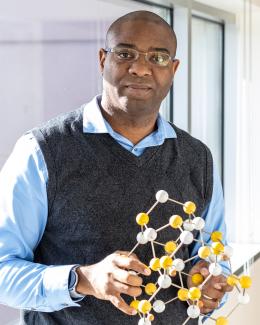Abstract
The slow kinetics of the oxygen evolution (OER) and oxygen reduction (ORR) reactions hamper the development of renewable energy storage and conversion technologies. Transition-metal oxides (TMOs) are cost-effective replacements to conventional noble metal catalysts for driving these electrochemical systems. Strain is known to greatly affect the electronic structure of TMO surfaces, leading to significant changes in their electrocatalytic activities. In this study, we explore the influence of strain on the OER and ORR mechanisms on the LaNiO3(001) surface using density functional theory (DFT). Through a comparison of the overpotential and the largest change in Gibbs free energy (ΔG) in the reaction pathway, we determined that the OER activity on the LaNiO3 surface is directly related to the desorption of –H from the surface, which can be tuned as a function of strain. Moreover, tensile strain shuts off the reaction pathway to forming the –O2H intermediate state, due to the dissociation of –O2H into –O2 and –H. This is largely a consequence of the strong binding of H to the surface O, leading to a significant increase in the largest ΔG for the ORR on the tensile-strained surfaces by promoting an alternative reaction pathway. Overall, our results show that tensile strain on LaNiO3(001) leads to a decrease in both OER and ORR activities. Interestingly, in both cases, we find that the reaction is driven by the interactions with surface O ions, thus calling for a reinterpretation of the role that Ni eg orbital polarization plays in defining the OER and ORR catalytic activity on the TMO surfaces. Here, it is an indirect measure of changes in Ni–O hybridization, which controls the binding of –H species to the surface. As such, these results highlight the importance of surface O ions; particularly as it relates to defining molecule–surface interactions that ultimately tune and enhance the electrocatalytic efficiency of perovskite materials through the modulation of strains.


